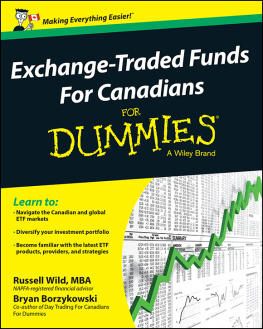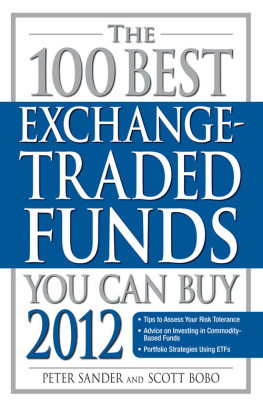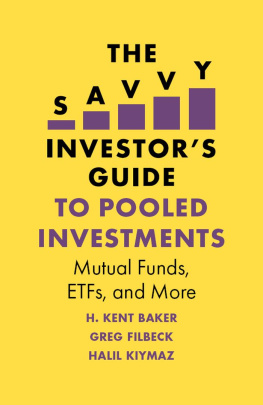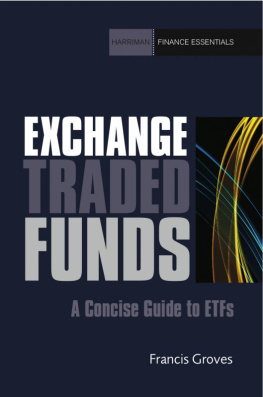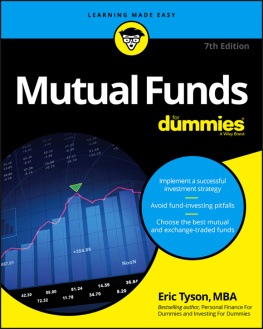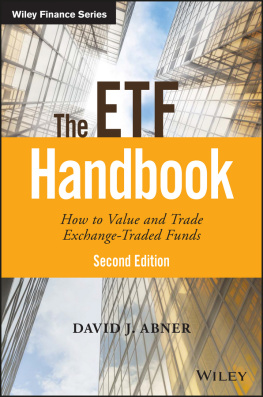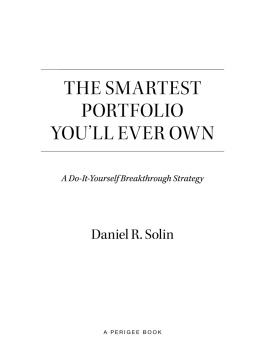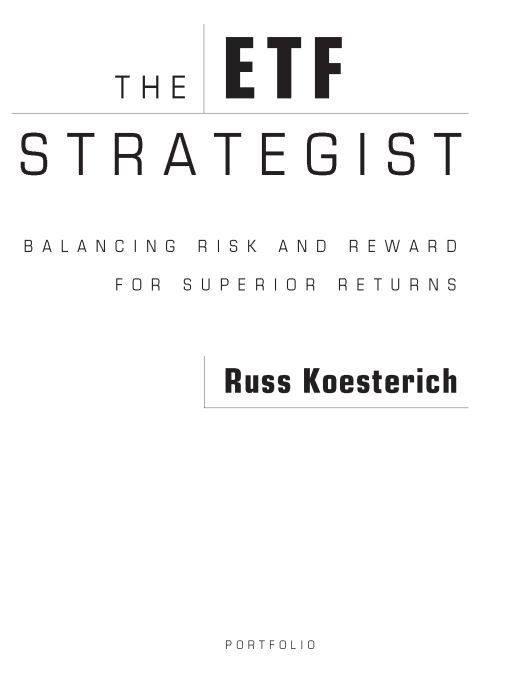Table of Contents
INTRODUCTION
Investors often look to financial books with the same dogged hope that those looking to lose weight place in diet books. And just as no diet, no matter how elaborate or simple, can reverse the simple truism of eating less and getting more exercise, no financial book can ease the basic reality of financial security: save more and spend less. Fad diets rarely result in prolonged weight loss, and rarely will a new technique or financial gimmick unilaterally enhance your financial well-being. Finance is as susceptible to fashions and fads as any other industry, although often at a considerably higher cost. A cursory look at the last several decades reveals several products that have come and gone, sometimes leaving more than a bit of financial wreckage in their wake.
So a book dedicated to a new, or at least trendy, financial innovation should be greeted with the same skepticism as late-night advertisements for diamond-hard abs or self-cleaning kitchen whisks. Financial security, like physical fitness, comes with few shortcuts old and dull admonitions like save more are as relevant today as when they were first issued. But once an investor has developed the basic discipline to adopt a regular savings plan, what then? He or she is still left with a barrage of choices and competing advice, much of it contradictory. Should you overweight stocks, or bonds? Invest, or trade? And what about international versus domestic investing? (If you are already looking to skip ahead to the conclusion, the correct answers are [1] stocks and bonds; [2] invest, dont trade; and [3] international and domestic, although more international.)
Choices are a good thing, but the human mind quickly becomes overwhelmed when bombarded by a virtually limitless set of options. As when facing a menu at a New Jersey diner, which can easily clock in at more than a hundred entrees, at some point it is just easier to give in and order the same old thing. And like that at the diner, the menu of financial products has exploded over the past decade. Adding to the confusion, defined benefit pension plans are in decline, and most individuals in their twenties and thirties are justifiably skeptical about their prospects of ever seeing a Social Security check. Finally, for investors who grew of age during the eighties or nineties, the last six or seven years have seemed less forgiving by comparison. While international and small-cap stocks have done well, large-capitalization U.S. stocks have taken seven years to eclipse their 2000 peak. And while the broader market has recovered, for those individuals unfortunate enough to buy into technology stocks at their peak, the 1990s seem like another age. Tech stocks, the darlings of the last decade, have never regained their former glamour, with the NASDAQ market still languishing at barely 50 percent of its 2000 high. Taken in aggregate, it is not hard to see why most Americans admit to a significant amount of financial insecurity, despite a good labor market and a generally strong economy.
So the challenges facing individual investors are several: too many products, most of which are inappropriate for ordinary investors; lower equity returns; and the erosion of the corporate and government safety net. The good news is that in many respects, it is now both easier and cheaper for individuals to invest than at any time in history. While markets are just as capricious and volatile as they have always been, investors can now access choices that did not exist until recently. For example, international investing is now much easier and cheaper than in the past. As solid financial portfolios are based on diversity, having access to new markets is no trivial thing. Investors also face considerably lower transaction costs (the price of buying and selling shares and bonds, or securities) than they have ever had. So while the basic principals of building a sound portfolio have remained the samesave, diversify, and keep costs down following the last two truisms has become a bit simpler.
In a broad sense, this book is about these last two principles: diversification and controlling the costs of investing. While neither is very sexy or exciting, they form the basis of a sound investment philosophy. Everyone dreams of the stock that will make them rich, but real-world investing means first concentrating on the basics. The investor who can only focus on finding the next Google is no different from the high school basketball player who wants to take shots from the half-court line before first developing a consistent free throw. Most investors would be surprised at how much they can improve their performance by just focusing on these basics. Paying attention to costs will help remove the drag on returns caused by overpriced financial products and services, while diversification will reduce excess volatility in your portfolio. Now, as stated above, achieving these objectives has become a bit simpler. In particular, the evolution of exchange traded funds, or ETFs, has given individual investors access to new markets, in a simple product, and at a cheaper cost.
What is unique about the exchange traded fund is that its principal benefit is not in raising returns, but in lowering risk. Risk management is a topic of serious concern for professional investors, but one that is often relegated to a footnote when discussing individual portfolios. Too many individuals have their gaze fixed on the stars, and are focused solely on the potential return of an investment with too little consideration for the accompanying risks. Yet, as most professional investors know, and as this book will illustrate, talking about returns without considering risk is a meaningless discussion. Returns are surprisingly easy to generate. Take more risk and over the long term you are likely to generate higher returns. The rub is that most investors are not indifferent to the level of risk in their portfolio. While everyone would like to enjoy greater than 20 percent annual returns, if made aware of the level of risk that would realistically be required to generate those returns, most investors would balk. The true metric of performance is how much return you can generate while constraining your risk to an acceptable level. This is how professionals measure their investment success, and it applies no less to individuals. In this context the exchange traded fund is a useful addition to most portfolios, specifically because it provides for greater precision in allocating risk.
The evolution of the ETF has occurred coincident to an explosion in the number and diversity of financial products. Over the past quarter century, new financial instruments have poured forth at a dizzying pace. Many of these instruments are known only by exotic labels that leave only the vaguest idea of what their true purpose is. This category includes a gaggle of securities and derivatives with names like liquid yield option notes, collateralized bond obligations, inverse floaters, and mortgage-backed securities. Exchange traded funds represent one of these innovations, neither the most exotic nor the most recent. The first exchange traded funds were launched nearly twenty years ago on the Toronto Stock Exchange. However, while not the newest or most esoteric of the recent innovations, ETFs are quickly becoming one of the more popular. More important, their use is not limited to rocket scientists in hedge funds or the proprietary desks of major brokerage houses. The investors best situated to take advantage of these instruments are individuals and their investment advisers who are looking for a more efficient and elegant way to construct well-diversified portfolios.


